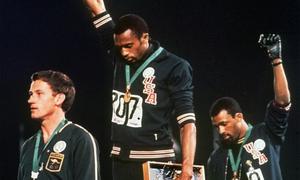article
1,733 Results
article
article
Teach This: Regulating Protest at the 2020 Tokyo Olympics

Analyze news of the recent announcement banning athlete protest at the Olympics to discuss protest and the power of individual voice with students.
article
Studying Gender Roles in Literature and Life
Examining “classic” literature presents the opportunity for a fascinating study in historical gender roles, but a comparison with today’s media can help students uncover shocking similarities.
article
Being a Good Sport When the Race Is Rigged
After hearing talk of the presidential election being rigged, this teacher, swim coach and TT Award winner began reflecting on a race that actually is rigged—the one his students face every day.
text
Literature
The Yellow Wallpaper
This short story—an important piece in early American feminist literature—sheds light on 19th century attitudes toward women with physical and mental illness. In this excerpt, the speaker details her bedroom, a place where her husband and doctors come to encourage her to health. Her ailment is vague; the emphasis is on what others—all men—think and say.
July 7, 2014
professional development
How to Implement 'Speak Up At School'
Here are activities designed for educators implementing the strategies presented in Speak Up At School to create a safe school climate.
May 2, 2014
text
Multimedia
The Convert
This radio segment looks at a workshop, led by law professor Ramzi Kassem, offering guidance to Muslims on how to respond in the event that they find themselves under surveillance in terrorism investigations.
July 3, 2014
lesson
Slavery as a Form of Racialized Social Control
How did racial hierarchy adapt and persist after Emancipation? Throughout its history, the United States has been structured by a racial caste system. From slavery to Jim Crow to mass incarceration, these forms of racialized social control reinvented themselves to meet the needs of the dominant social class according to the constraints of each era.
October 13, 2014
article
Now-based Curriculum

Instead of discussing current events only on Tuesdays or only in response to traumatic events, let’s help students use the curriculum to understand and act against current injustices.
